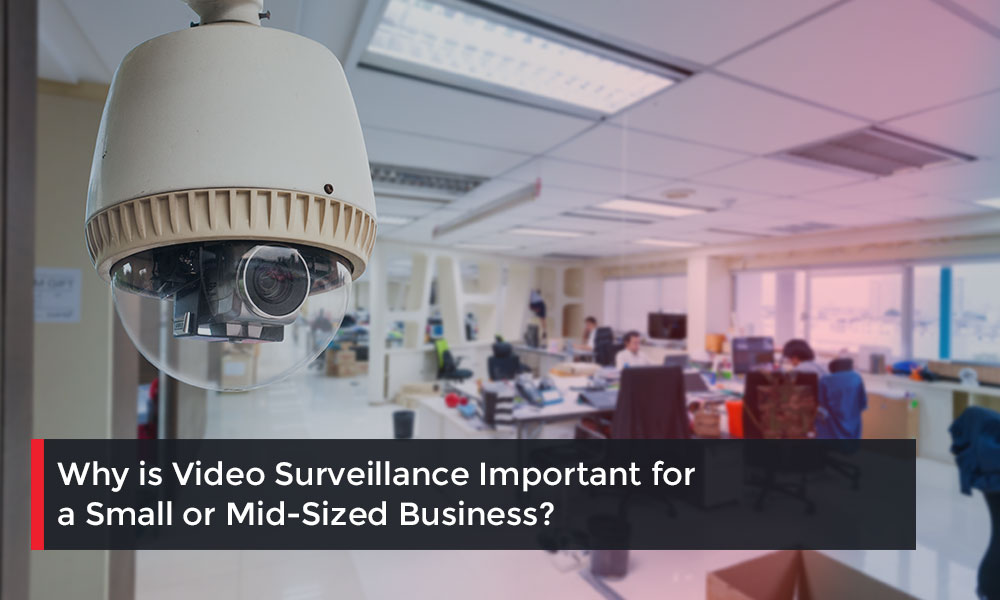Security is a top concern for every business, enterprise, and institution in the country. However, security priorities tend to vary from business to business.
Many organizations have a pronounced need for on-premises video surveillance – banks, hospitals, government institutions are just a few. But small and mid-sized businesses often don’t give enough thought to the benefits of video surveillance.
The truth is that people steal of small businesses all the time. Intruders gain unauthorized access to sensitive data from mid-sized corporations frequently. There needs to be a balance between different types of security to ensure all assets are properly secure.
Hayes International’s annual retail theft survey revealed that one out of every 35 employees were caught stealing from their workplace in 2017. But the threat of theft shouldn’t be the only reason behind better surveillance. Improving security can have numerous benefits including improving your business processes.
The Benefits of Video Surveillance for Your Business
Retailers have an obvious need to invest in video surveillance. But organizations throughout all sectors of the economy can benefit as well.
Many of these benefits apply to any office environment:
• Asset Protection. Assets don’t get up and walk off-premises on their own, but if they hold sensitive data, it might seem like they do. Anything from old reports to office supplies and even printers can find their way out of an unsecured building.
A video security system can help protect these assets from customer and employee negligence. Remember that your employees may not intend to break company policy, but without video surveillance you have no record against which to test them.
• Safer Environment. Employees enjoy a better sense of protection with video cameras around. Privacy SOS has a list of studies that prove that overall crime drops in public areas where closed-circuit television (CCTV) cameras are deployed. This should apply even more in private settings, further enhancing the protection of employees.
Also, security cameras may be consulted for employee disputes, preventing potential lawsuits. Worker’s compensation and employee harassment are just two examples of instances when having a visual record can be of great value.
• Monitor and Improve Workflow Processes. With the help of CCTV management, supervisors have a more in-depth way of analyzing business process. They can ensure that employees follow the right protocol for various processes. They can correct employees taking the wrong approach and rectify it in real-time.
• Increase Employee Production. The Hawthorne effect notes that peoples’ work capacity seems to increase when they are aware of being monitored. Employees may show more eagerness and be more productive after surveillance cameras are installed – or simply spend less time slacking off.
• Remote Monitoring. The video feed of all the cameras can easily be streamed online. This enables monitoring of the office at all hours from any device.
• Keep Security Costs Low. Deploying security cameras around the office is far less expensive than hiring security guards to keep areas secure. Organizations can cut down on security costs by installing a CCTV monitoring system.
Take the Right Approach to Security and Surveillance for Your Business
There are a variety of surveillance solutions for integrated security available to small and mid-sized businesses. Consider the following elements of your security system to help determine the perfect option for all your surveillance needs.
Identify Your Security Objectives
What is the objective behind your security installation? Executives need to identify exactly what problem they expect surveillance to solve. This can mean preventing theft, monitoring business processes, or reinforcing existing security policy. Most likely, it will be a combination of these.
Clarifying objectives will help security buyers obtain technology that helps fill those needs. It helps the security vendor design a plan for optimal camera placement with minimum investment to meet the objectives in question.
Prioritize Your Needs
Once the objectives are clear, making a list of priorities is the logical next step. For example, budget-friendly cameras may be preferable to the latest high-definition cameras in many conditions. Network compatibility and access to video storage servers can also be important. A clear set of priorities helps executives extract the best possible value from surveillance purchases.
Plan for the Future
Be flexible and adaptable when deciding on surveillance technology so that your business can maximize the hardware’s expected lifetime. The last thing any organization needs is a system that will become obsolete in the next quarter because of a new acquisition or some other change.
Planning for your business’s future security needs allows you to take a more careful approach to all aspects of your security framework when employing a surveillance solution.
Managed service providers like DSI can help your business implement these assets. From ensuring that the right infrastructure is in place to installing cameras and servers for video storage, vendors like us can be an invaluable resource.
Is it time for your business to deploy a next-generation video surveillance system on-premises? Contact DSI to learn more.

